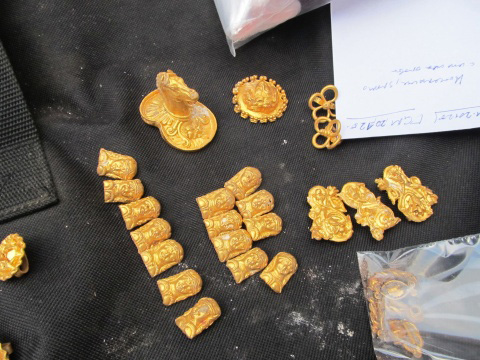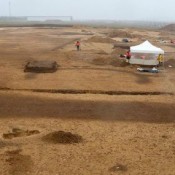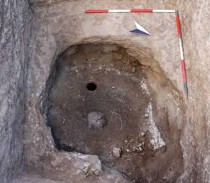Fragments of a wooden box, containing a number of extremely well-preserved golden objects, dated from the end of the 4th and the beginning of the 3rd century BC has been discovered in the famous Sveshtari tomb (Northeastern Bulgaria), as the head of the archaeological team Prof. Diana Gergova, from the National Archaeology Institute at the Bulgarian Academy of Sciences announced yesterday. The discovery was made during excavations at the Omurtg mount.
The “golden treasure” includes four spiral gold bracelets, and a number of intricate applications like one featuring the head of a female goddess adorned with beads, or a horse head with a base shaped like a lion head. The precious find also contains a ring, buttons and beads. The objects weigh 1.5 kg. In the wooden box charred bones and ashes were also found.
Gergova explains that the treasure was probably wrapped in a gold-woven cloth as indicated by a number of gold threads discovered nearby.
The researchers believe these are, most likely, remnants from a ritual burial. The excavations at the site continue and archaeologists expect to discover a huge burial ground, probably related to the funeral of the Gath ruler Kotela, one of the father-in-laws of Philip II of Macedon.
According to Gergova, the Omurtag mount is the biggest one in the Gath center, the religious and political capital of the Gath tribe, one of the tracian tribes that influenced most western tribes such as the Celts.
Bulgarian archaeologists expect this discovery will entice the Ministry of Culture to fund the excavations at this emblematic Thracian site. The Sveshtari tomb, which is on the world cultural-historical heritage list of UNESCO, is part of the necropolis of the site.
Gergova added that the Omurtag mount should be turned into a museum, where the excavated parts would be exhibited.




